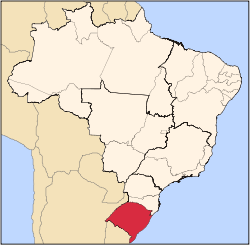History
The first migrants arrived in 1918, when the first trails were opened, before the definitive road, which took 10 years to be built, between Boca da Picada (current municipality of Seberi) and Águas do Mel (current city of Iraí).
The first carters, under the command of a merchant who had settled in Boca da Picada, transported manufactured goods and agricultural produce. On one of these trips, a barrel of brandy fell from the cart, damaging the lid. In order not to throw the container away, they had the idea of placing it upside down over a spring, under a shaded area, inserting a bamboo stick in the side hole. The location of the barrel by the roadside, with clean water and plenty of shade, contributed to the emergence of the expression “I will rest, eat and sleep in the barrel”. Thus the village grew in the jungle of the Alto Uruguai Valley, and began to be called simply “Barril”, a name that remained for years - and still remains as a municipal symbol.
Later, by Decree 30 of the Mayor of Palmeira das Missões, by decision of a residents' assembly, the name Vila Frederico Westphalen was established, honoring the engineer who colonized the region under the command of the State Government. Frederico Westphalen is buried in the Santa Casa de Misericórdia Cemetery in Porto Alegre.
This page is based on this
Wikipedia article Text is available under the
CC BY-SA 4.0 license; additional terms may apply.
Images, videos and audio are available under their respective licenses.





